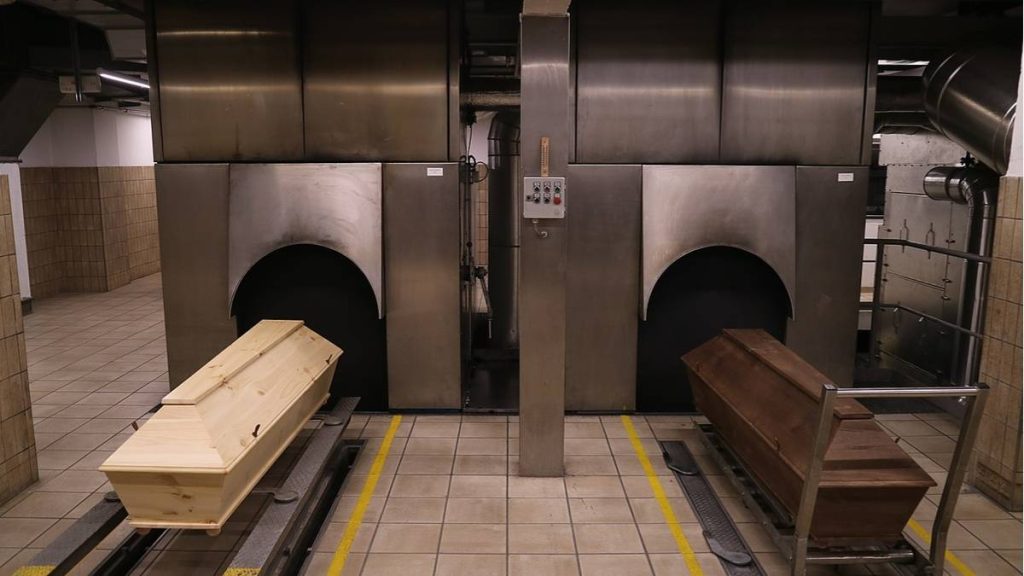The liturgy of the Catholic church emphasizes the resurrection of the dead. So, centuries before 1963, Catholics were at the mercy of many burial rules.
The rules restrict them from cremating or mutilating the bodies of dead relatives. According to the Catechism, “bodies of the dead must be treated with respect and charity, in faith and hope of the Resurrection.” However, in 1963, the Vatican lifted the cremation ban, but with some guiding rules.
Seven years ago, the Vatican published a review of burial guidelines. Catholic’s prefect of doctrines from Argentina, Cardinal Victor Manuel Fernández, signed the document on behalf of the Vatican.
The new resolution contains several rules with specific instructions on handling the ashes after cremation. First, they cannot keep any of the cremated remains at home. Instead, families can store the ashes in a church crypt or graveyard—which Catholics see as sacred places.
ALSO READ: The Complicated Relationship Between Iconic Singer Madonna and The Catholic Church
Also, Catholics could not scatter the ashes of loved ones after the cremation. Families who showed prior interest in dispersing the ashes of their relatives would be denied a Catholic burial.
There is also the practice of keeping relatives’ ashes as mementos in pendants and lockets. The 1963 resolution does not tolerate those. Meanwhile, struggling to come to terms with modern methods of burial is not a challenge peculiar to Catholics.
Like burial rites, observers have spotlighted Pope Francis’s many liberal reforms. So, in new developments, the many restrictions on the 1963 catholic resolution have been reviewed in light of widespread burial practices worldwide.
For example, data made available by the Cremation Association of North America shows an explosion in the number of families opting for cremation. There are projections in the US that cremation rates will jump from 59.1% to 65.4% by 2027.
POLL — Is Climate Change a Major Threat That Requires Immediate Policy Action?
However, the Vatican has nothing to say about some new methods of disposing of human remains. The new Vatican instruction did not mention methods like human composting, cryogenic embalming, and alkaline hydrolysis. Interestingly, the new rules allow families to keep portions of their relatives in places of significance, aside from graveyards and churches.
As usual, some conditions need to be in place for these new rules to stand. According to the Vatican’s Dicastery for the Doctrine of the Faith, the church may permit some special requests by members to store relatives’ ashes. The condition is that church members cannot use the remains in any symbolic form, either in worship or veneration.
ALSO READ: Pope Francis Punishes Critic Cardinal Burke in Second Action Against Conservative Critics
Last week, The Vatican announced the relaxation of many of the restrictions on the Catholic burial rules. In what came as a surprise to many, Pope Francis recently unveiled plans for his burial. The pope’s health has been quite fragile lately, but he dispels any worries that his time has arrived.
In what turns out to be a first, Pope Francis has given unique instructions about his burial. The ceremony will be held in Rome, and the mass at St. Peters Square. It is a historical fact that popes are buried in Vatican City. However, in what is another proof of his liberalism, the pope requests for just a simple burial.
You Might Also Like This:
New Huntington Council Transforms City to Rights Battleground
Protesters in Sarasota Call for Resignation of GOP Board Member Over Sex Scandal
Are the Liberals Solutions Helping Black Students Perform Better?
Washington Post Employees Walk Off Job in Massive Labor Protest
Harvard, MIT, and Penn Presidents Spark Controversy With Response to Antisemitism
